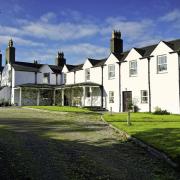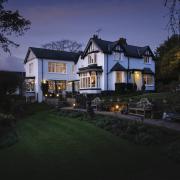Is your Tree for Life, or Just for Christmas?

The Christmas build up for me started the day the family chose the tree – debates about the right shape, size and distribution of branches were all taken very seriously. Whenever I move house, I know I’ve found the right place when I can envisage firstly where my piano will go, and secondly where I’m going to put the Christmas tree. Festivities end abruptly when the sad sight that greets commuters on the way to work is that of abandoned Christmas trees piled up outside houses - usually with a single forlorn piece of tinsel attached.
Autumn and winter weather elements cause seen and unseen damage to trees, shrubs and hedgerows. During the summer, whilst the sun shines (we live in hope!) through the vibrant green leaves creating incredible dappled shade, you may temporarily forget the natural hazards wrought by the rain and wind. As the UK seems to endure more extreme weather, it is inevitable that trees on both public and private land will undergo more frequent scrutiny to ensure least risk to livestock, property and people. Rotten branches; branches weakened in storms; whole trees that appear fine but are, in fact, completely dead inside; hedgerows that have suffered damage or have not been maintained and so do not prevent run-off from the fields onto public highways; trees that are affected by – or causing – subsidence where there are heavy clay-based soils. Additionally, with the need for more housing, the proximity to woodland – or the need for clearing scrub or unsafe trees –arboriculture then comes to the fore.
Just in case it wasn’t a word with which you were totally familiar, arboriculture, I have now learnt, is the cultivation, management, and study of individual trees, shrubs, vines, and other perennial woody plants. It is both a practice and a science: the practice of arboriculture includes cultural techniques such as selection, planting, training, fertilization, pest and pathogen control, pruning, shaping, and removal; the science studies how these plants grow and respond to cultural practices and to their environment.

The risky side of the tree business is dealt with by Tree Surgeons. Tree surgery is one of the most dangerous jobs in the world, second apparently only to deep-sea fishing...Essentially, tree surgeons are horticultural maintenance engineers and are responsible for felling trees, removing tree stumps, pruning branches and shrubs, planting, replanting, splitting logs and hedge-cutting and general maintenance. I’ve been lucky enough to see a tree surgeon at work – my children described them as “like circus people with chainsaws”: we were spellbound for an hour, watching them cope with harnesses, branches, power tools, safety instructions, and changeable weather conditions in increasingly precarious positions with properly dangerous equipment.
Trees are living ecosystems themselves and are a fundamental and treasured part of our environment. A tree surgeon’s understanding of what they are dealing with is truly fascinating and they are sympathetic to the fact that conflicts between trees and people often arise. This can be due to trees’ natural growth or their failure due to the impact of inclement weather or, alternatively, conflicts can result from human activities impacting on the tree. In either case it’s a tree surgeon’s job to resolve the issues to make sure people and property stay safe and to maintain the health and welfare of trees.
Tree Preservation Orders – also known rather more snappily as TPOs – are put in place by the Local Planning Authority to protect specific trees or a particular area, group or woodland from deliberate damage and destruction. A TPO can prevent felling, lopping, topping, uprooting or any willful damaging of trees without the permission of the Authority, although it has to be said that different TPOs have different degrees of protection.

For us as Land Agents, looking after trees for our clients takes a number of forms. A general tree survey of all woodland, single trees and hedgerows takes place every 3 years – unless there has been some particularly virulent storm, or rain – in which case a tree surgeon will go and do immediate post-storm checks to make sure that neither people or property are in any immediate danger. The power companies regularly check the wires and pylons that criss-cross land and will liaise with us when they need access to private land if tree limbs are getting too close; their tree surgeons specialise in dealing with the unique risks involved in branches hanging over cables.
We work with the Local Authority when, very occasionally, a limb from a tree on our clients’ land might find itself overhanging a road or footpath: with the risk assessments in place, out will also come traffic management systems if needs be, and then those talented tree surgeons will deal with felling, making safe and clearing away the resulting logs.
As well as for public safety, tree surveys are also carried out to identify risk in connection with Planning Applications, Mortgages, Subsidence Claims, and Asset Management. Trees on some of the estates we manage are estimated to be about hundreds of years old. The sense of both history and responsibility is huge. Just occasionally, deciding that a tree poses danger for the safety of a property – and thereby the people living in it – can cause a more natural sort of confliction… when certain birds or bats decide that this dangerous tree is the very place they call home! Tree surveys can lead to bat surveys and owl surveys – and everything possible is done to make sure that everyone’s “home” (people, mammal or feathered friend) remains their safe haven.
Strutt & Parker, 37 Lower Bridge Street, Chester CH1 1RS 01244 354855



























